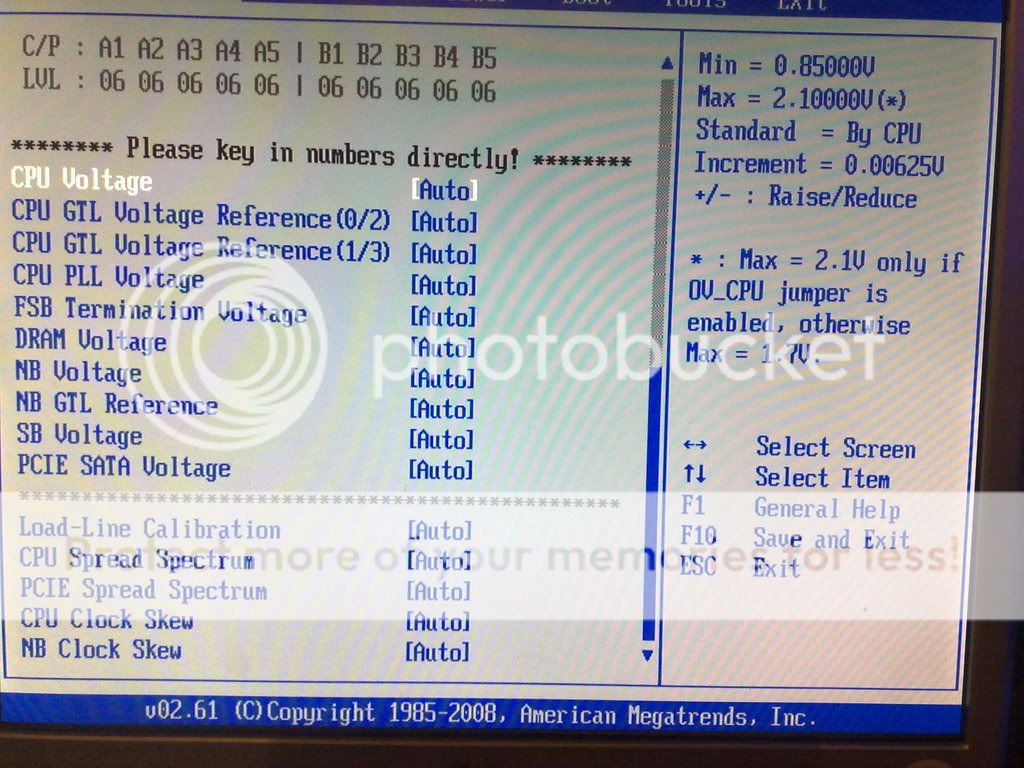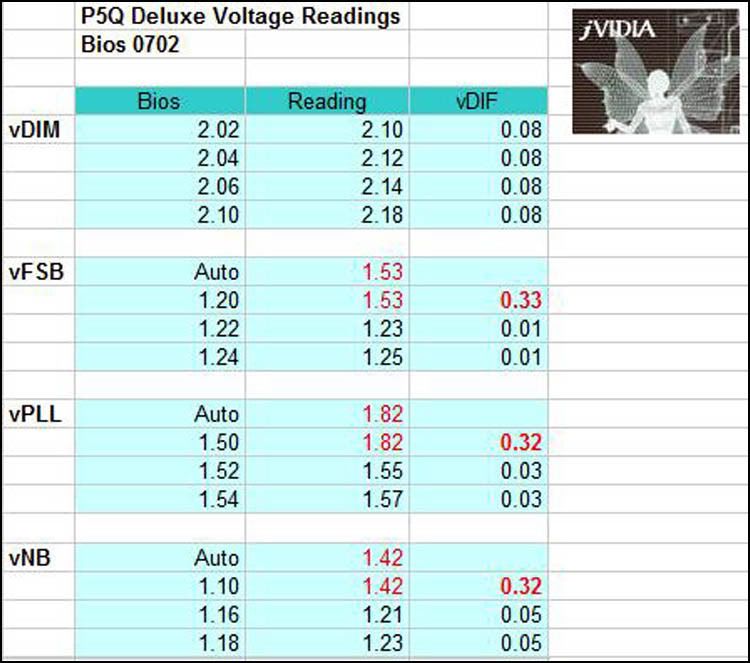My first overclock: e8400 + P5QE - Finished w/ settings!
Hi Guys,
Now that i've finally managed to get my complete kit ready (see my sig) i want to start overclocking.
I've turned off C1E and speedstep and i'm currently running at 9x333.
Before i start overclocking, i want to get it right in my head about exactly what i need to change ... here are a couple of pics of my BIOS:


Ok ... heres a few questions about the above bios pics:
1 - [FSB Strap to North Bridge] - Do i need to change this?
2 - [Mem. OC Charger] & [Ai Clock Twister] - Should i disable these? What are they?
3 - Should any of those settings be changed to a manual value?
Now, I've been reading the (excellent) guide that is posted as the sticky in this forum, Interpretting it for my bios, is this what i need to do:
A - Adjust the [FSB Frequency] in +5 mhz increments
B - Adjust the [DRAM Frequency] so the memory isn't overclocked - Will changing this to 1066 or slightly lower be ok?
C - If the system becomes unstable adjust the [CPU Voltage] up a 'notch' - to a maximum of 1.36
D - Adjust the [DRAM Voltage] ?
Overclockers have just put the TRUE and my new power supply in the post so should be doing the proper overclock in a couple of days ... so you guys have got a couple of days to tell me what to do lol!
I'm going to try for a 4Ghz overclock, from what i've read this should be ok with my system?
All help will be much appreciated!
Edit: I have the E0 version of the e8400
Hi Guys,
Now that i've finally managed to get my complete kit ready (see my sig) i want to start overclocking.
I've turned off C1E and speedstep and i'm currently running at 9x333.
Before i start overclocking, i want to get it right in my head about exactly what i need to change ... here are a couple of pics of my BIOS:


Ok ... heres a few questions about the above bios pics:
1 - [FSB Strap to North Bridge] - Do i need to change this?
2 - [Mem. OC Charger] & [Ai Clock Twister] - Should i disable these? What are they?
3 - Should any of those settings be changed to a manual value?
Now, I've been reading the (excellent) guide that is posted as the sticky in this forum, Interpretting it for my bios, is this what i need to do:
A - Adjust the [FSB Frequency] in +5 mhz increments
B - Adjust the [DRAM Frequency] so the memory isn't overclocked - Will changing this to 1066 or slightly lower be ok?
C - If the system becomes unstable adjust the [CPU Voltage] up a 'notch' - to a maximum of 1.36
D - Adjust the [DRAM Voltage] ?
Overclockers have just put the TRUE and my new power supply in the post so should be doing the proper overclock in a couple of days ... so you guys have got a couple of days to tell me what to do lol!
I'm going to try for a 4Ghz overclock, from what i've read this should be ok with my system?
All help will be much appreciated!
Edit: I have the E0 version of the e8400

Last edited:




